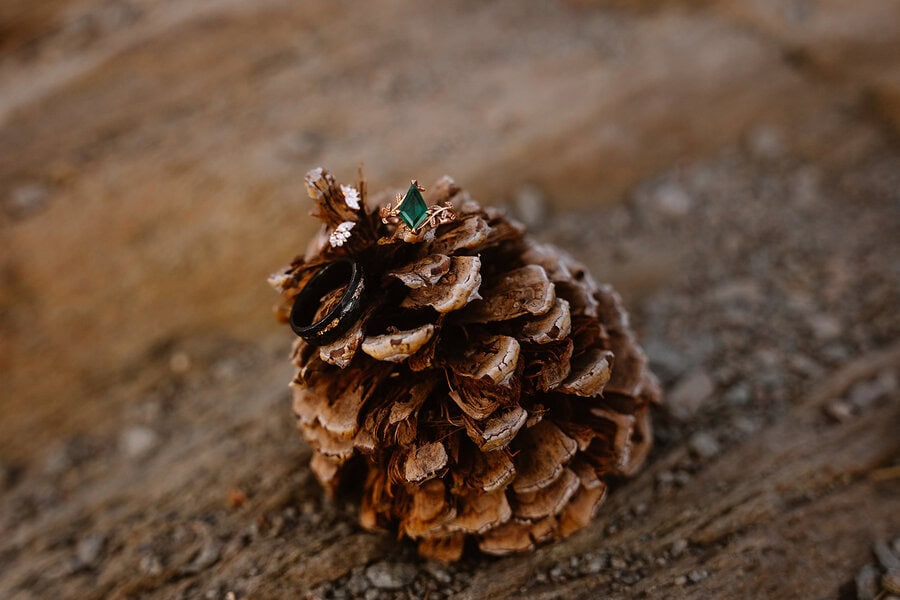So, you’re thinking about eloping in California? Awesome choice! Whether you want to exchange vows on a cliff in Big Sur, under the redwoods, or in the desert, California has plenty of options. But before you pack your bags, let’s talk about the legal stuff. Getting married isn’t just about finding an epic location—it also means handling paperwork. If you’re wondering what the legal requirements for eloping in California are, this guide breaks it all down for you. I promise, it’s not as complicated as it seems.




Do You Need a Marriage License to Elope in California?
Yes, you do. No matter where you elope, it’s one of the legal requirements for eloping in California to obtain a marriage license from a county clerk’s office. You and your partner must apply in person and bring a valid form of ID, like a driver’s license or passport.
Some counties let you start the application online, but you’ll still have to show up in person to finish the process. Also, California doesn’t have residency requirements, so even if you’re from out of state, you can still get married here.
What to Bring for Your Marriage License:
- A valid photo ID (driver’s license, passport, or military ID)
- Both of you must be present to apply
- Payment (fees vary by county, usually between $60-$100)
- If you were previously married, proof of divorce or annulment (if it happened within the last 90 days)
Some counties require an appointment, so check ahead. Find your local county clerk’s office here.
Public vs. Confidential Marriage License
California has two types of marriage licenses: public and confidential. Here’s the difference:
- Public Marriage License – This is what most couples get. It’s public record, meaning anyone can request a copy. You need at least one witness (more on that in a second).
- Confidential Marriage License – This option is private. Only the couple can get copies, and no witnesses are required. You must already be living together to qualify.


Do You Need an Officiant and Witness?
Yes. In California, you need an officiant to legally marry you. If you’re using a public marriage license, you also need at least one witness. If you’re using a confidential license, you don’t need a witness—but you still need an officiant.
Here are your officiant options:
- A religious or civil officiant (minister, priest, rabbi, etc.)
- A judge or commissioner
- A friend or family member (they can get ordained online through Universal Life Church)
- Your photographer (me!)
Filing Your Marriage License After the Ceremony
Once you’re married, you or your officiant are responsible for sending the signed license back to the county within 10 days. After that, you can request a certified copy for proof of marriage.
This step is important—your marriage isn’t legally recognized until the county records it.
Can You Elope in a California National Park or Public Land?
Yes, but you might need a permit. National parks, state parks, and other public lands have rules about ceremonies, so check ahead.
For example:
- Yosemite National Park requires a special use permit (usually $150-$200).
- Joshua Tree National Park also requires a permit, and they restrict certain locations to protect the environment.
- All state parks in California require a permit for elopements and your photographer will need to obtain one from the California Film Commission.
If you’re eloping outdoors, I can help guide you through the process. I’ve photographed couples in many of these locations and know what permits you might need. Check out my guide on eloping in Big Sur for more details.



Name Change After Eloping
If you plan to change your name after eloping, you’ll need a certified copy of your marriage certificate. Once you have that, you can update your name on your Social Security card, driver’s license, passport, and bank accounts. Each agency has its own process, so be prepared for some paperwork. There services like HitchSwitch and NewlyNamed that offer step-by-step guidance.
Best Time to Elope in California
Since we’re talking logistics, let’s cover timing. California’s weather varies depending on where you’re eloping.
- Coast (Big Sur, Mendocino, etc.) – Best from late spring to early fall. Expect fog in the mornings.
- Deserts (Joshua Tree, Death Valley, etc.) – Fall through spring is ideal. Summer is dangerously hot.
- Mountains (Yosemite, Lake Tahoe, etc.) – Summer and early fall are best for accessibility. Winter elopements are beautiful but require snow gear.
If you want to avoid crowds, aim for sunrise or a weekday.
How I Can Help You Plan Your California Elopement
Eloping should be simple, not stressful. As an elopement photographer, I don’t just take photos—I help with planning, permits, and finding the best spots. I help you understand the legal requirements for eloping in California. I’ve spent years exploring California’s outdoor spaces, so I know where to go for a private, unforgettable experience.
If you’re ready to start planning, check out my elopement photography packages or reach out to me here. Let’s make it happen!
I’m Karen, a Southern California Elopement Photographer who empowers couples to create memories that will last a lifetime. I am dedicated to providing the tools you need to create an unforgettable experience.
I help couples by providing personalized location lists, planning resources, vendor recommendations, permits, timeline-curation, and much more to curate elopement days that will be cherished forever.
Your Southern California Elopement Photographer, planning expert, and adventure pal.
I'm here to empower you to create memories that will last a lifetime.
About Karen
Follow me on Instagram
@karenagurtophoto
Follow me on Instagram!
@karenagurtophoto

You must be logged in to post a comment.